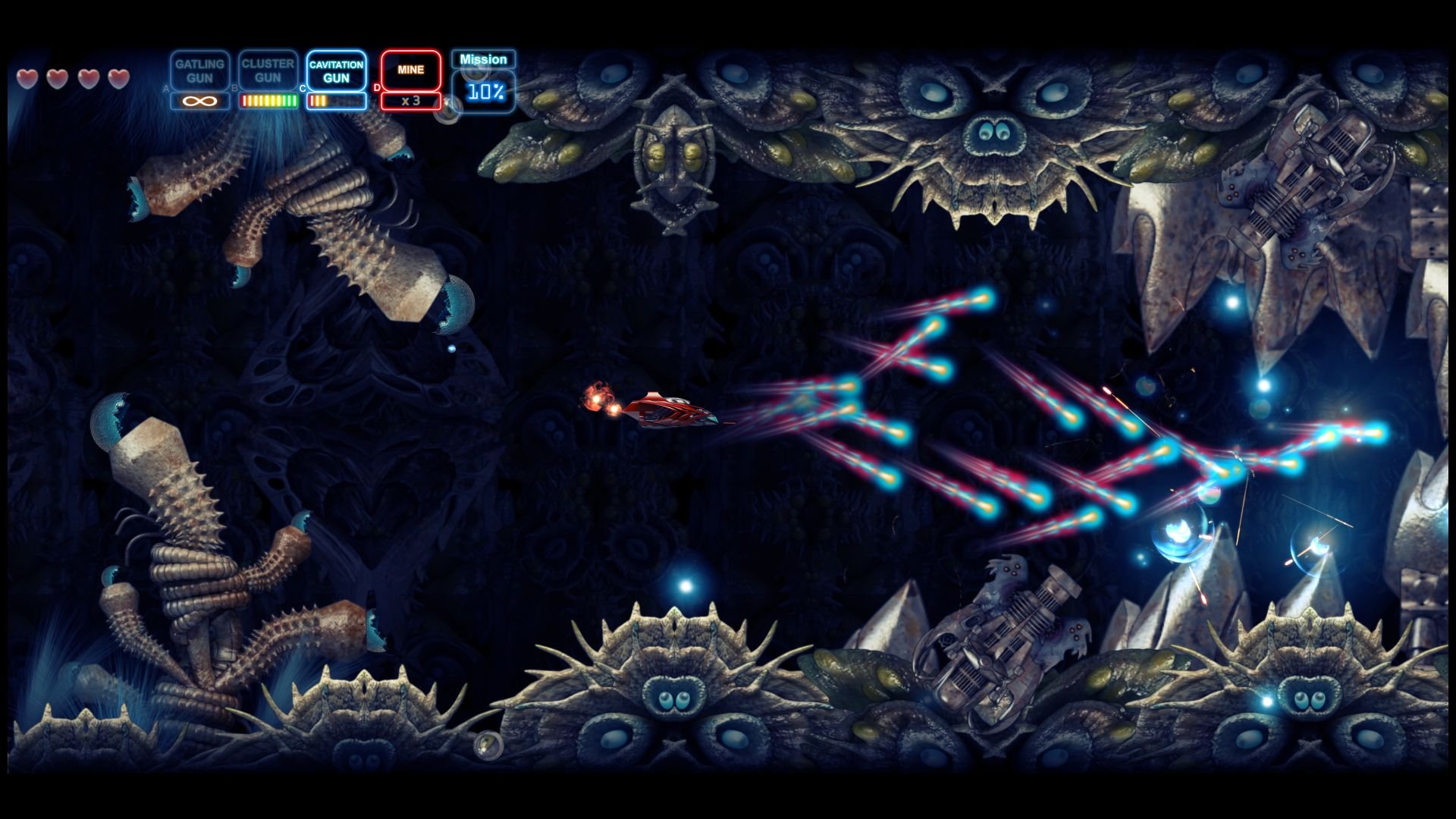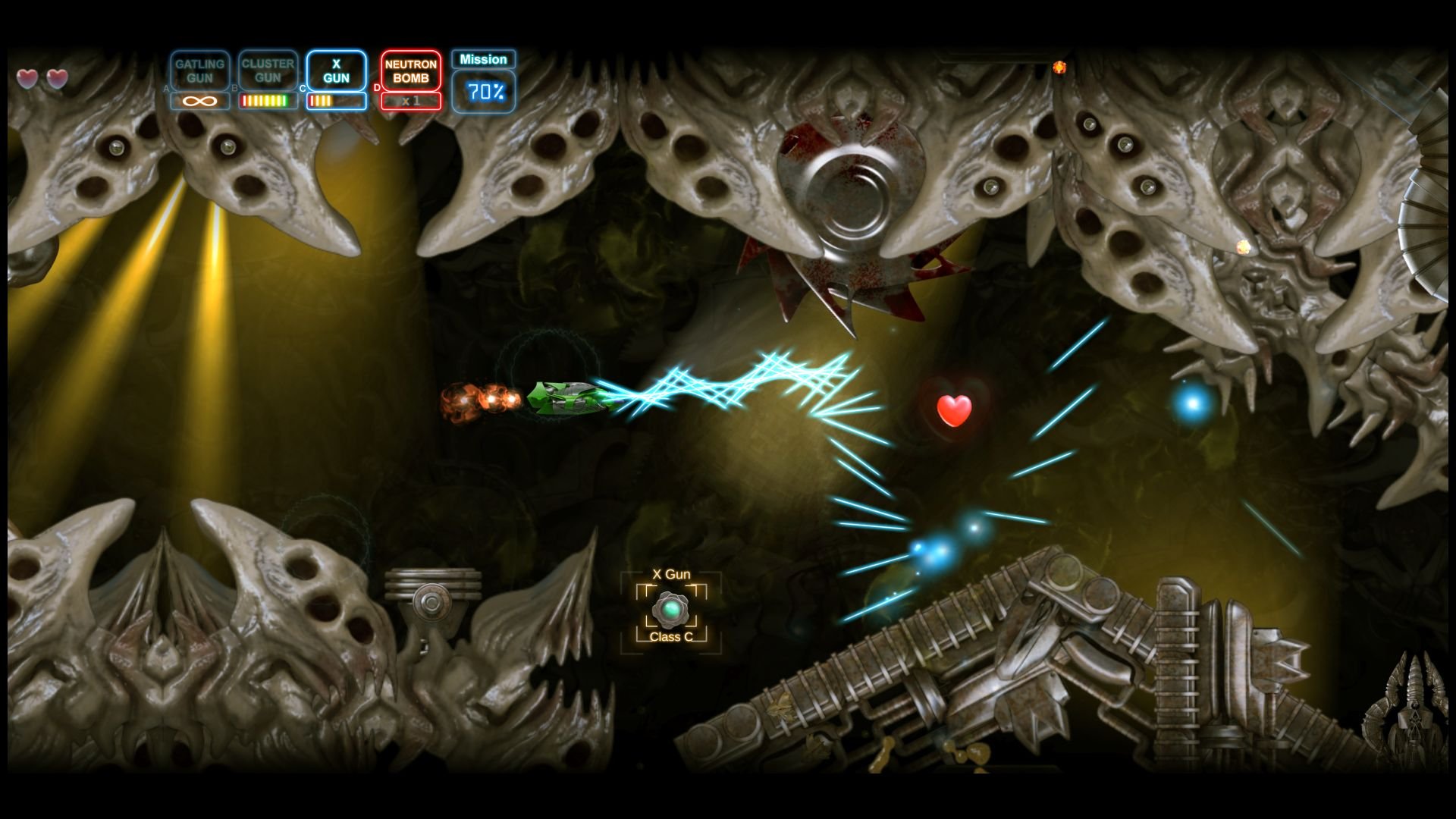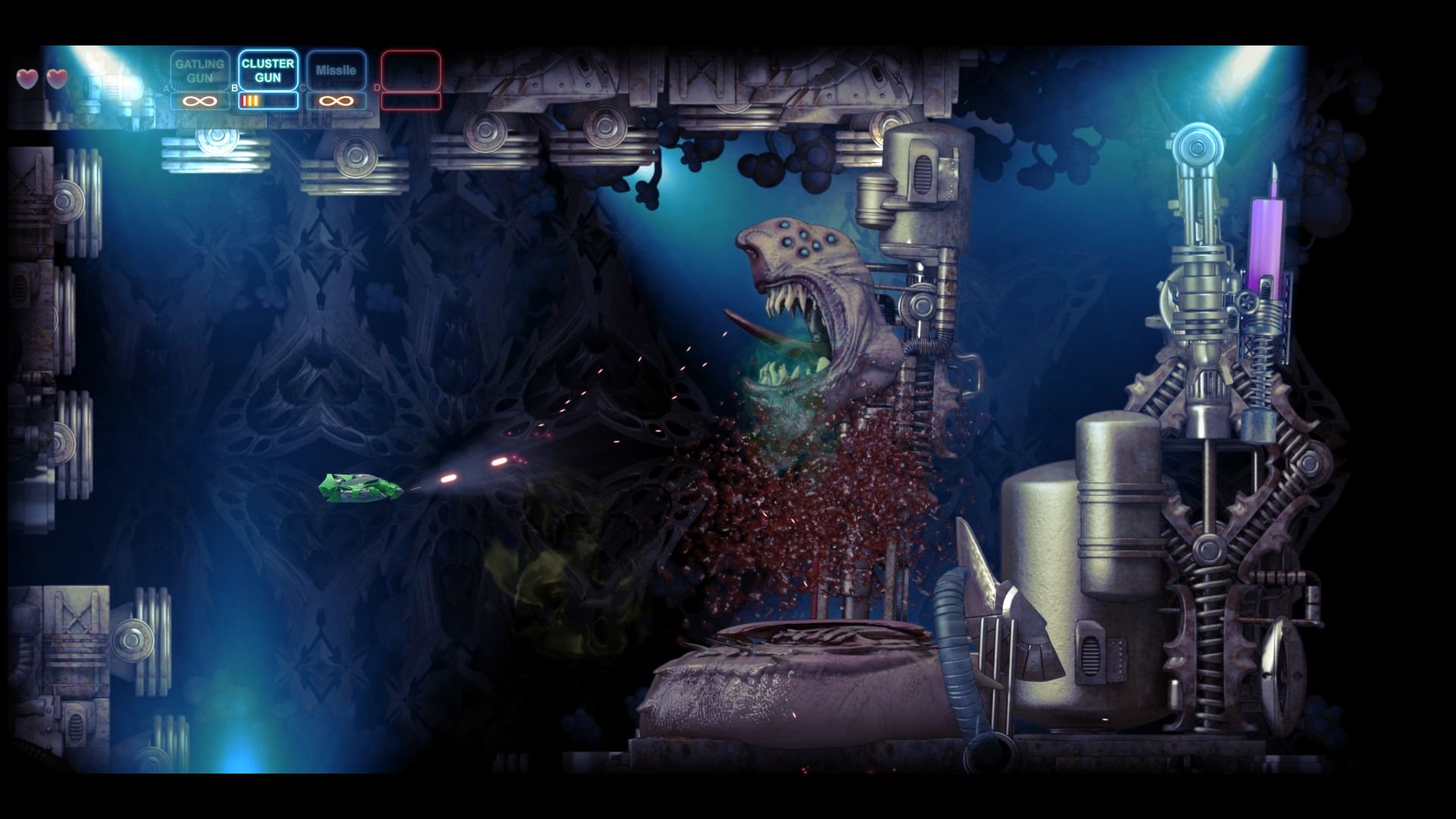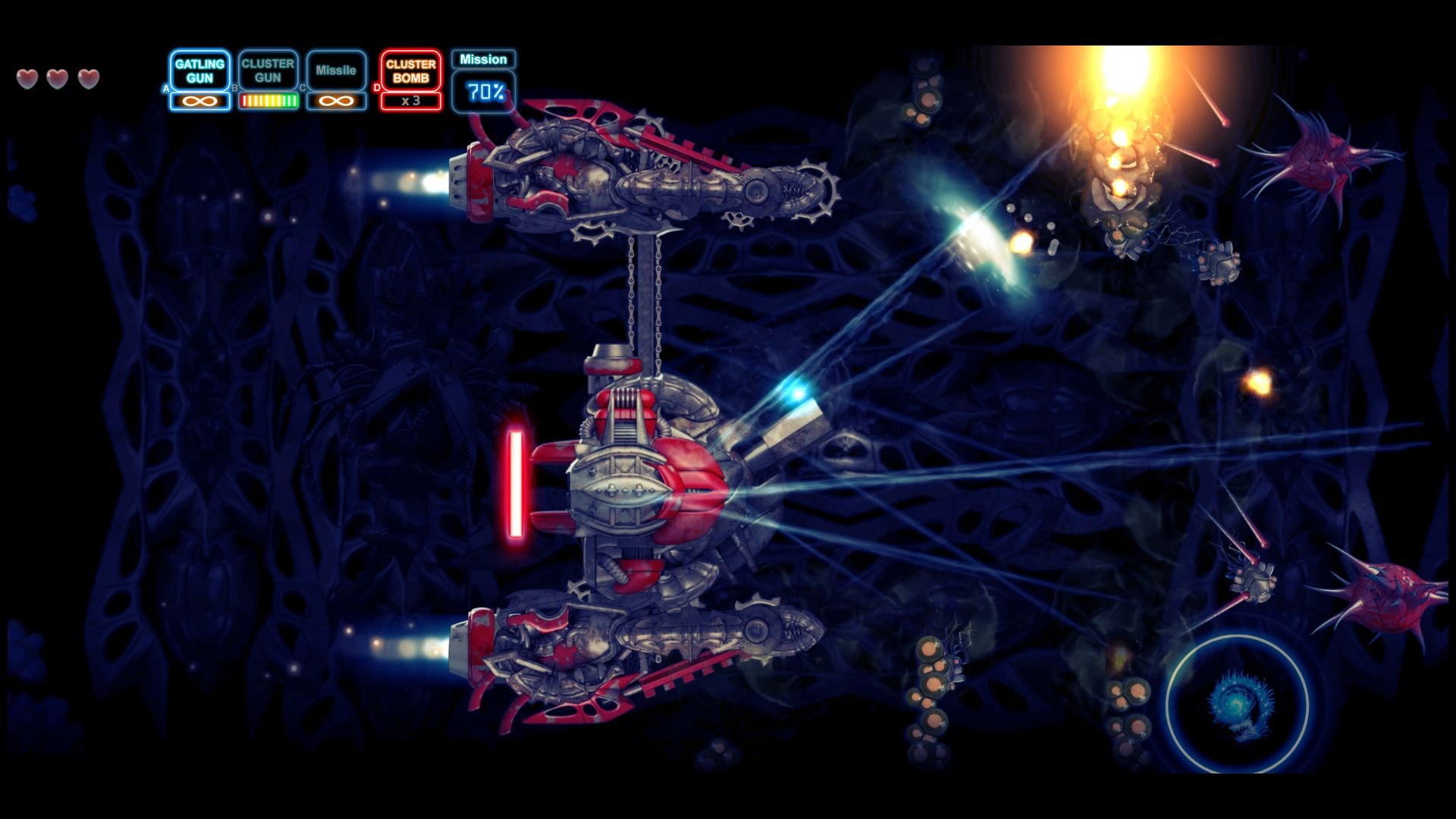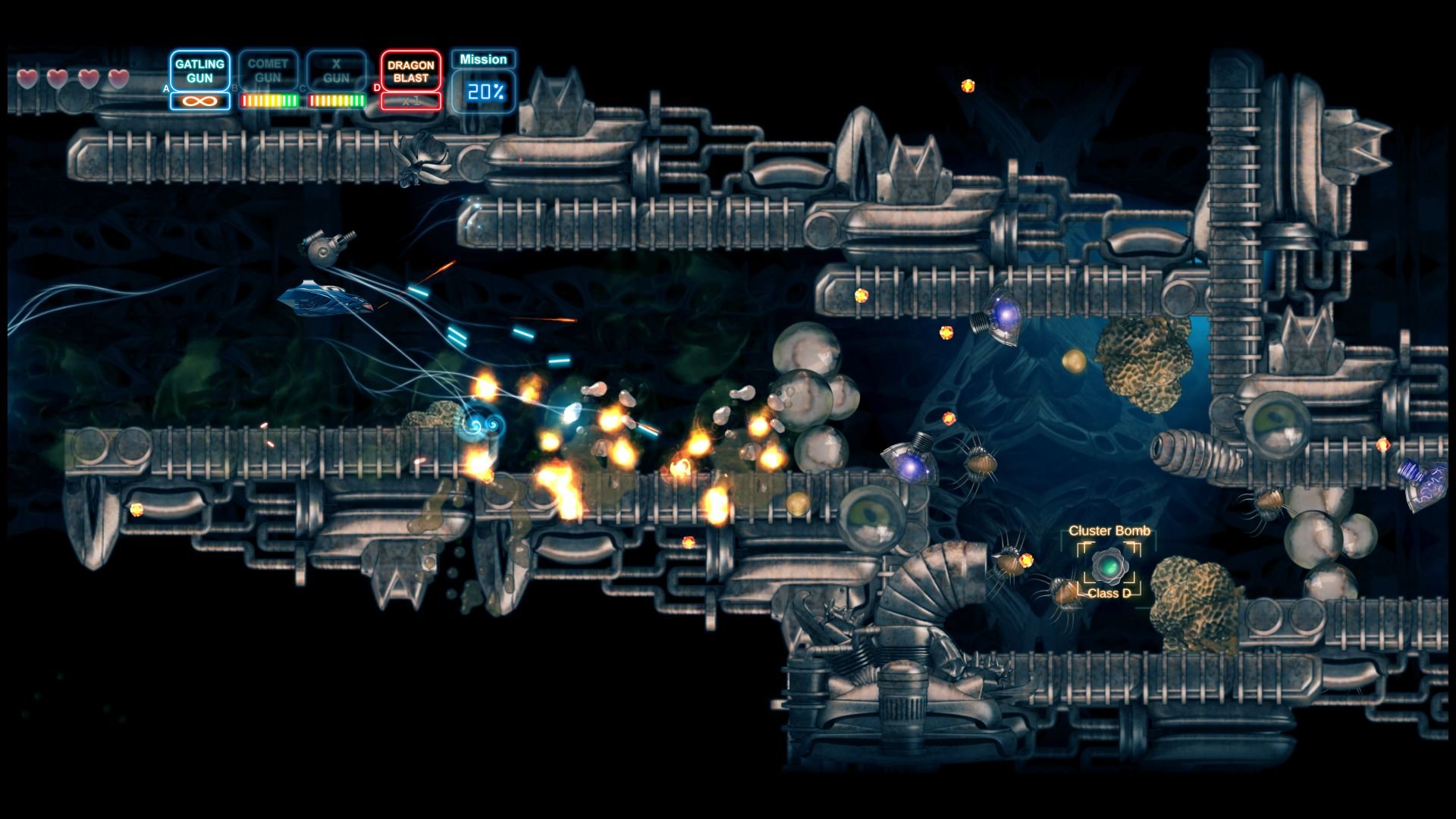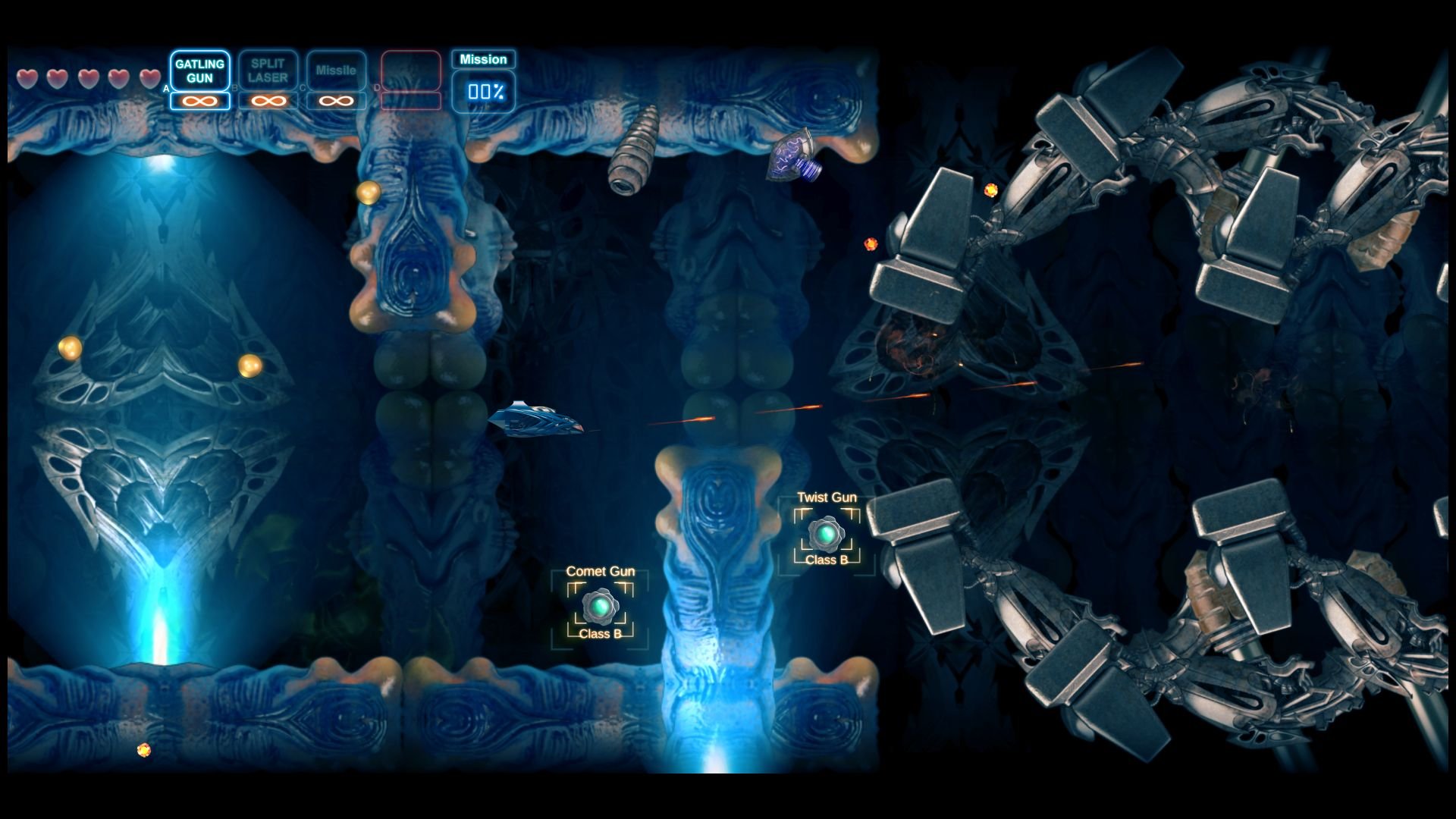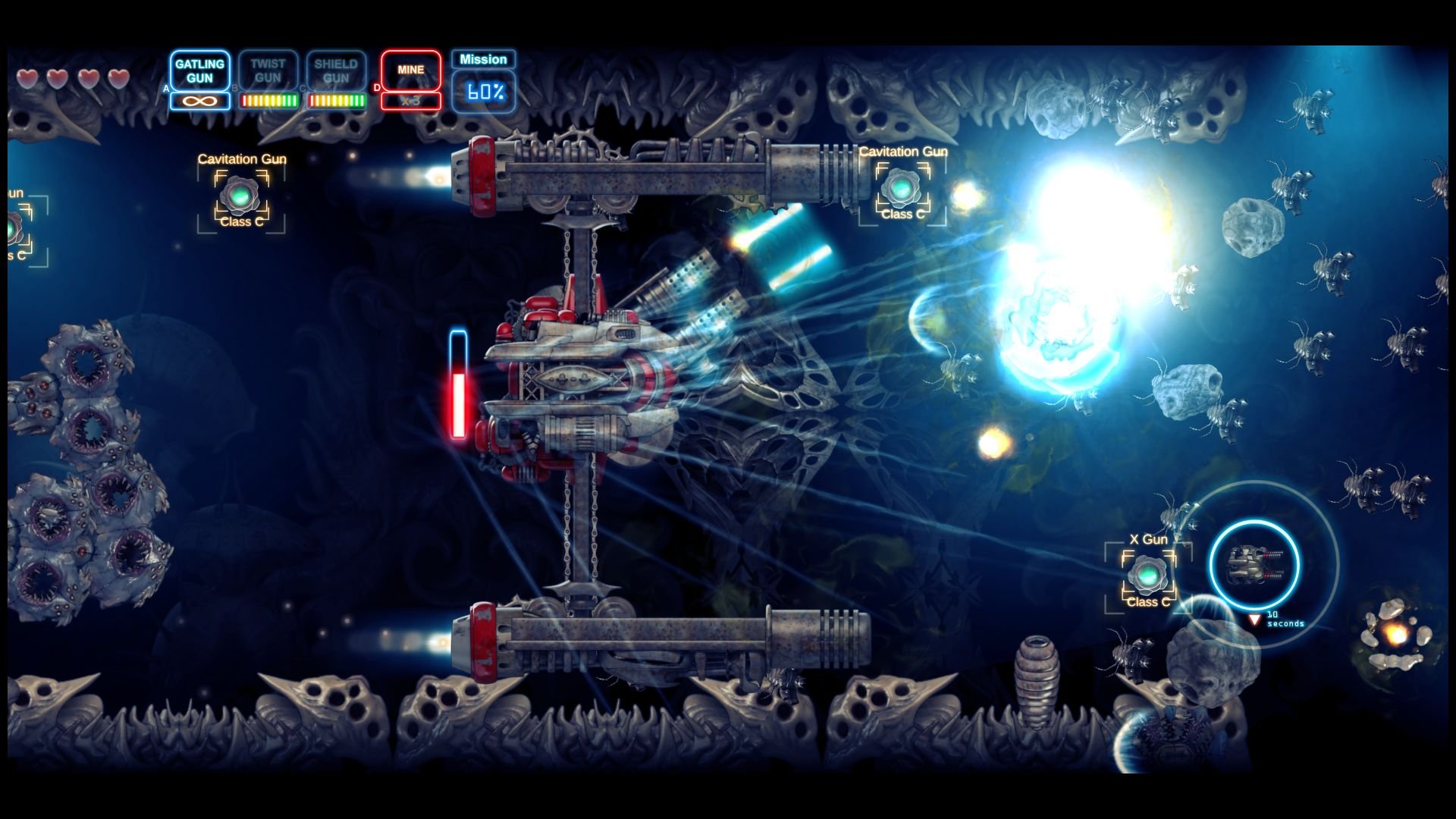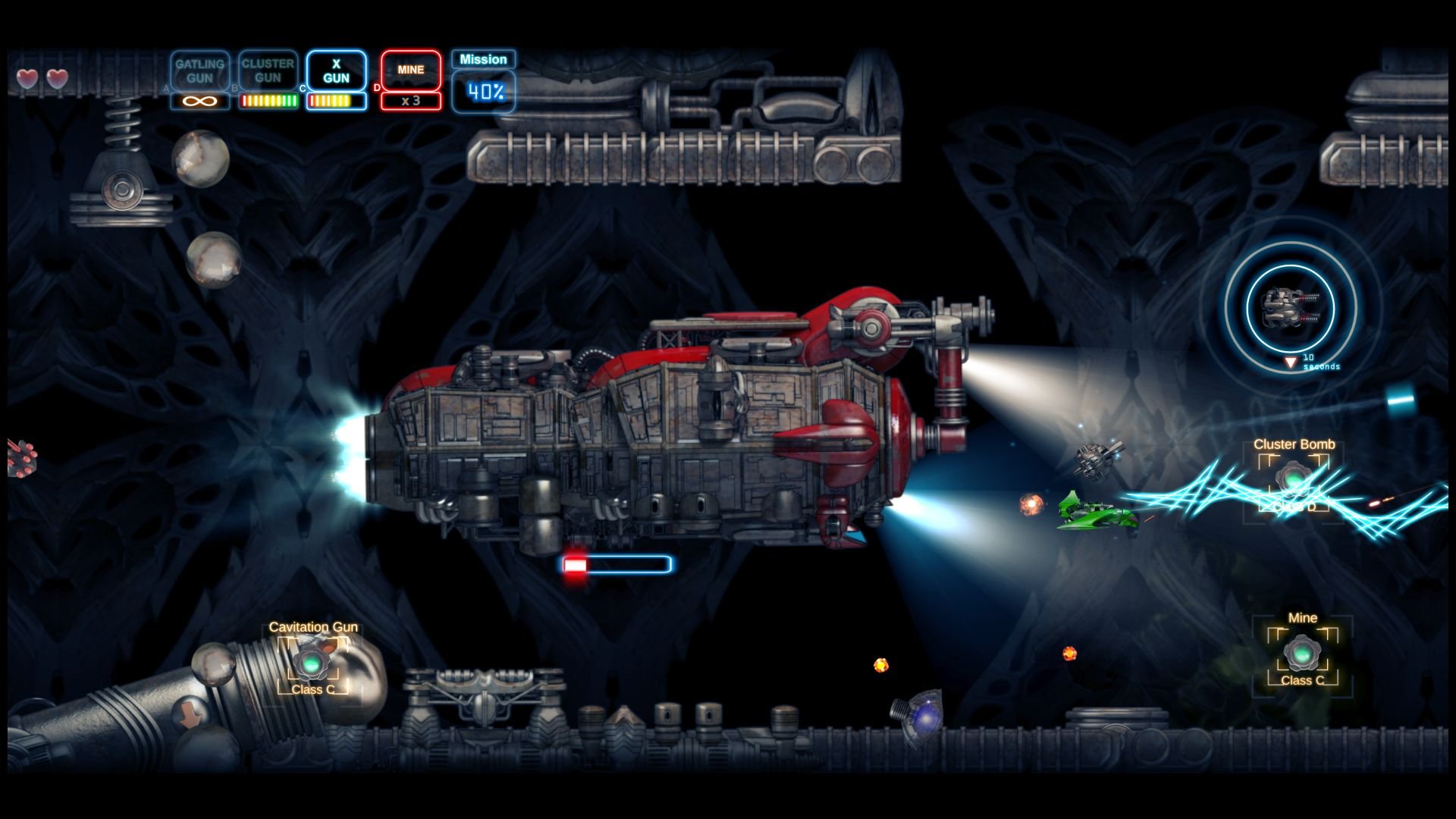In space, no one can hear your robotic scream.
The horizontal shmup has a vast history across gaming. With hundreds of titles that relate in some way to the Shoot’em up, several of them often take an existing formula and try to put their own spin on it. R-Type is certainly one of the most popular and well-known brands associated with the genre, but developer Next Game Level has bridged the shoot’em up with that of a twin-stick shooter, creating the fantastic, if flawed, Remote Life.
Remote Life is shockingly crafted by a one-man team. Developer Mario Malagrino himself handled the entire development over the course of three years. What Malagrino has made here is a damn impressive title that is both gorgeous to look at and backs that up with impressive weaponry, grotesque enemies, and some visually striking bosses. However, as impressive as those aspects are, Remote Life is plagued by a lot of poor design choices that do sour the fun far more than I had hoped for.
The story presented by Remote Life is beyond throwaway and isn’t something you are going to come to the title for. A mysterious alien force has appeared and humanity has a limited amount of time to act. You are set on your mission to counter this attack, and while at first, I was impressed that there was some voice acting, it wasn’t long before I realized that everything was being spoken by a text-to-speech program that can take some dialogue that is meant to be dour and sad and make it laughably corny as the robotic speech just lacks even a percentage of emotional range.
Your quest to save humanity is played across 18 missions that are consistently gorgeous and offer a pretty wide variety of gameplay with escort missions and a few large turret-equipped vehicles that your ship can slot into. Each stage ends with a boss encounter, and while the bosses all look distinct and often the type of thing you’d imagine on a heavy metal album, many of them lack depth when it comes to how you overcome them. One boss, for example, had a very noticeable blind spot behind their head and I simply sat there shooting them until they were dead. In fact, most bosses were far too easy and often died when I assumed a second phase was about to start. This isn’t true for some bosses, such as those that hide behind certain spawning debris-type creatures, but most of these grotesque titans were a pushover.
Remote Life is one part Shoot’em up, and one part Twin Stick Shooter and this is due to your bullet spray having a 360-degree spread. Granted, the bullet spray comes from the nose of the ship, but overall, it makes tracking down and killing everything around you a whole ton easier than something like R-Type where you often lack the ability to even shoot behind you. While shooting is very intuitive and enjoyable, the exploration and mobility offered here have some serious issues.
The hitbox your ship has might as well be a garage to park it in. If the very edge of your ship even whispers against anything, you’re dead. If your ship is 50 meters across, then the gaps that you need to maneuver around are 50.5 meters wide. For as often as I was destroyed by enemy fire, I often died far more due to hitting some part of the environment or some part of the level that regrew faster than my ship could move out of the way for.
As the action scrolls across, you often have to wait for doors to open, or clamps to open around you, often leaving you vulnerable as you often can’t backtrack or dodge incoming fire as you float there waiting. To make matters worse, enemies can fire through anything often leaving you vulnerable as you wait for the level to scroll over or maneuver through a series of clamps or doors. It’s a shame the enemy forces you are taking on don’t obey the same rules you have to as it can make things far too unpredictable and cheap, especially as some incoming fire are the tiniest of effects, often unrecognizable from various effects native to the level itself.
Now, the game does a good job at conveying what is an enemy, and what is a background element, but as mentioned, there are little wisps of bullets and laser trails that can easily kill you and are often lost when your own bullet effects and various power-ups or other enemies and obstacles are layered over top of them. These small bullets are not incredibly common, but are so small, and so quick, that you’ll often not understand why you died, due to how tiny they truly are and how often you might think they are a lighting effect and not a bullet. I cannot imagine playing this on the Switch while portable, especially due to the size of the screen; you’d never see these bullets coming.
Remote Life will start you off with a set number of lives, and thankfully, dropping to less than three will often trigger additional lives to appear at designated spots in the level, and often during boss fights as well. This can make some tough areas of the level to let you breathe knowing you might have a life token up ahead to keep you in the fight. I also love that there is a percentage meter on your HUD that indicates how far along in the level you are.
If you start the next level after defeating the previous boss, you can also back out of the new level, reselect it, and rejoin it will full health, which is something I really like. In fact, you merely need to press the back button to go right back to the main menu and retry the level again without a single prompt. Part of the difficulty with Remote Life is simply memorizing the patterns and levels as the overall challenge the game presents is fairly minimal due to keeping to that strict pattern.
Most shmups often have a great deal of replayability in learning their levels, but also in scoring systems. Oddly enough, Remote Lite doesn’t have any sort of score tracker or leaderboard, which, for some shmup enthusiasts, may hurt the replayability factor when it comes to how the genre is often looked at. Personally, it wasn’t a dealbreaker for myself, but I can certainly see how it could be for diehard fans of the genre who often want to get the best score.
Shooting in shmups often comes down to their weaponry, the variety, and the bullet spread. Thankfully, Remote Life has this nailed perfectly. You have three standard weapon slots; the A-type Gatling Gun, B-type Split Laser, and the C-type Missile Battery. You also have a special weapon that is often some form of screen-clearing bomb or a line of mines you can leave in your wake. Each weapon has an upgraded variation that can be picked up as the story tells us that mission command can teleport weapons to you. These often take the form of ricochetting lasers, a collective of light-show style bullet barrages, and more. The variety and effects are great, but can often get in the way of some enemy fire, as mentioned before. Still, shooting is constantly satisfying and delivers.
Some obstacles need to be shot in the environment in order to proceed, but your ship often lacks the speed to traverse these if you don’t use the correct gun. In mission 11, for example. there are these antenna-looking creatures that are harmless from far away, but you need to shoot them for them to retract. They often come in a group and block your progression unless retracted. If you shoot one, then a second, and your weapon spray isn’t fast enough, they will push back out before the third allows you to pass. This sort of bullet versus speed vs environment issue is constant throughout the game, with various gears and clamps often moving faster than you can move. Had the game had some sort of dash, then I think it would fix some problems here.
While I mentioned the voice acting is robotic due to the text-to-speech delivery, the music is solid and really energizes the action. There are a few moments where the track will start that could have been cleaned up to transition better, but the techno-infused synth is rather good without being memorable enough for me to track down the soundtrack. Otherwise, all sound effects, both weapon-based and that of the enemy are top-notch here and go a long way to make this game soar. If I had to complain about anything audio-wise, it would be the awful high-pitch wail that comes from the game over screen; It’s incredibly painful.
Remote LIfe has a lot going for it. Excellent enemy designs, superb weaponry, and its twin-stick setup really makes this one of the best shumps I’ve played in years. But its hitbox is simply a pain to deal with, and the levels are built around a mobility that your ship often can’t translate. The story is a complete pass and while some strong voice acting could have delivered at least tolerable dialogue, the text-to-speech setup here falls entirely flat. As a sum of its parts, Remote Life is still damn impressive, especially as it is a result of one single developer. I think with some refinement and a clearer visual language on what is a lighting effect and what is the tiniest bullet known to mankind, this could be a franchise to be held up with the genre’s best.
Developer - Next Game Level. Publisher - Next Game Level. Released -May 27th, 2022. (2019 on PC) Available On - Xbox One/Series X/S, PlayStation 4/5, Nintendo Switch, Microsoft Windows. Rated - (T) Blood, Violence. Platform Reviewed - Xbox Series X. Review Access - A review code was provided by the publisher for the purpose of this review.


